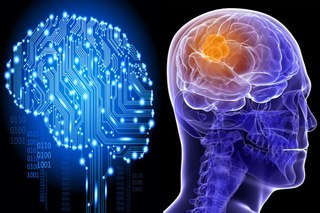Computer Program Beats Doctors at Spotting Brain Cancer
TECHNOLOGY, 26 Sep 2016
Ajay Ghosh – The Universal News Network
21 Sep 2016 – A computer program developed by a team of researchers led by an Indian American scientist has outperformed physicians in diagnosing brain cancer. The program was nearly twice as accurate as two neuroradiologists in determining whether abnormal tissue seen on magnetic resonance images were dead brain cells caused by radiation, called radiation necrosis, or if brain cancer had returned, reported a study published online in the American Journal of Neuroradiology Sept. 15.
“One of the biggest challenges with the evaluation of brain tumor treatment is distinguishing between the confounding effects of radiation and cancer recurrence,” said Pallavi Tiwari, an assistant professor at Case Western Reserve University in Cleveland, Ohio. “On an MRI, they look very similar,” she said. With further confirmation of its accuracy, radiologists using their expertise and the program may eliminate unnecessary and costly biopsies Tiwari said.
Brain biopsies are currently the only definitive test but are highly invasive and risky, causing considerable morbidity and mortality. To develop the program, the researchers employed machine learning algorithms in conjunction with radiomics, the term used for features extracted from images using computer algorithms.
The team trained the computer to identify radiomic features that discriminate between brain cancer and radiation necrosis, using routine follow-up MRI scans from 43 patients. The team then developed algorithms to find the most discriminating radiomic features, in this case, textures that cannot be seen by simply eyeballing the images.
“What the algorithms see that the radiologists don’t are the subtle differences in quantitative measurements of tumour heterogeneity and breakdown in microarchitecture on MRI, which are higher for tumour recurrence,” Tiwari said.
In the direct comparison, two physicians and the computer programs analyzed MRI scans from 15 patients from University of Texas Southwest Medical Center. One neuroradiologist diagnosed seven patients correctly, and the second physician correctly diagnosed eight patients. The computer program was correct on 12 of the 15, the study said.
DISCLAIMER: The statements, views and opinions expressed in pieces republished here are solely those of the authors and do not necessarily represent those of TMS. In accordance with title 17 U.S.C. section 107, this material is distributed without profit to those who have expressed a prior interest in receiving the included information for research and educational purposes. TMS has no affiliation whatsoever with the originator of this article nor is TMS endorsed or sponsored by the originator. “GO TO ORIGINAL” links are provided as a convenience to our readers and allow for verification of authenticity. However, as originating pages are often updated by their originating host sites, the versions posted may not match the versions our readers view when clicking the “GO TO ORIGINAL” links. This site contains copyrighted material the use of which has not always been specifically authorized by the copyright owner. We are making such material available in our efforts to advance understanding of environmental, political, human rights, economic, democracy, scientific, and social justice issues, etc. We believe this constitutes a ‘fair use’ of any such copyrighted material as provided for in section 107 of the US Copyright Law. In accordance with Title 17 U.S.C. Section 107, the material on this site is distributed without profit to those who have expressed a prior interest in receiving the included information for research and educational purposes. For more information go to: http://www.law.cornell.edu/uscode/17/107.shtml. If you wish to use copyrighted material from this site for purposes of your own that go beyond ‘fair use’, you must obtain permission from the copyright owner.
